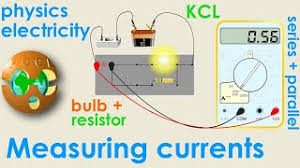A German Physicist Gustav Robert Kirchhoff introduce this law in 1845. Gustav Kirchhoff’s current law is one of the fundamental laws used for circuit analysis. According to Kirchhoff’s current law, the algebraic sum of all the branch currents at a given node is zero at all instant of time. At any node in a network, the sum of the currents flowing into the node is equal to the sum of the currents flowing out of the node.
Application of Kirchhoff’s current law
- The practical application of KCL is to determine the amount of current flowing through individual electronic components or more complex electrical circuits. Using this we can manipulate current to the component by controlling resistance to it. On a simple note we can balance a given circuit by adjusting voltage and current so that at a selected node, the current if measured is zero because the incoming current is equal to the outgoing current. So by balancing we can calculate a no. of parameters for a circuit. This is also known as Kirchhoff’s junction or Kirchhoff’s first law.
- Here, the three currents entering the node, I1, I3, I4 are all incoming currents and are positive in value. The two current I2, I5 are outgoing currents and are negative in value.
- Then means we can write the equation as; I1, + I3 + I4 – I2 – I5 = 0
